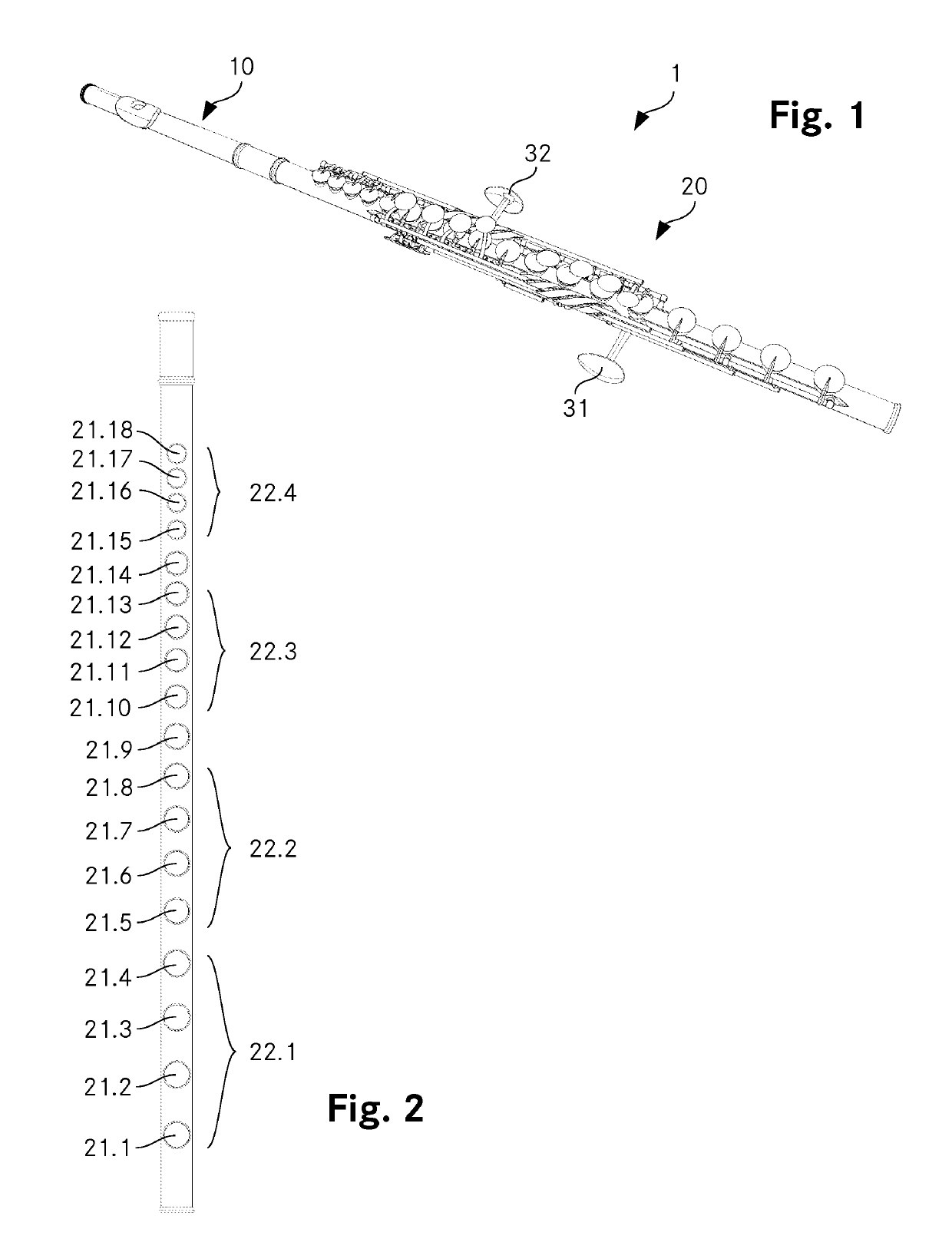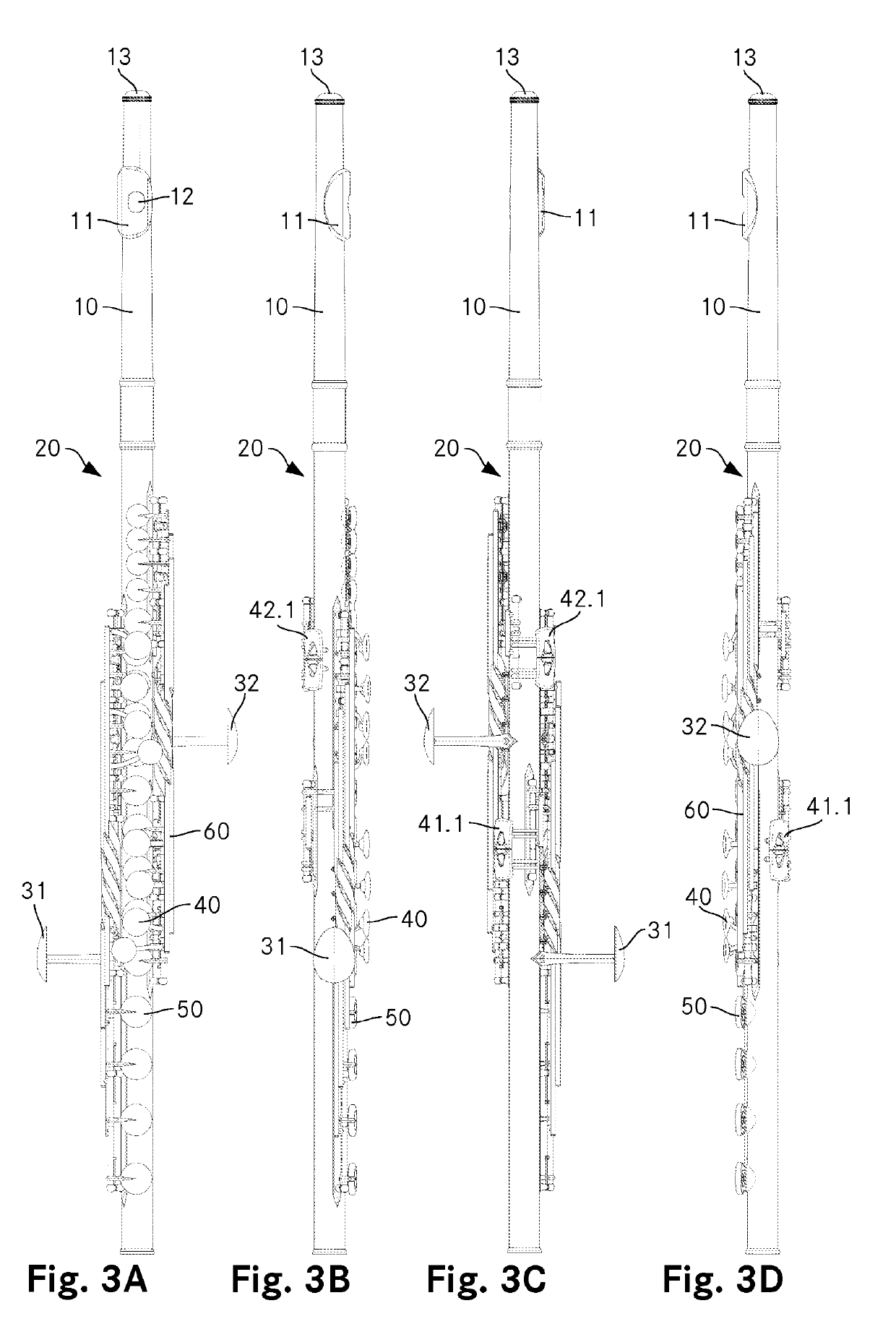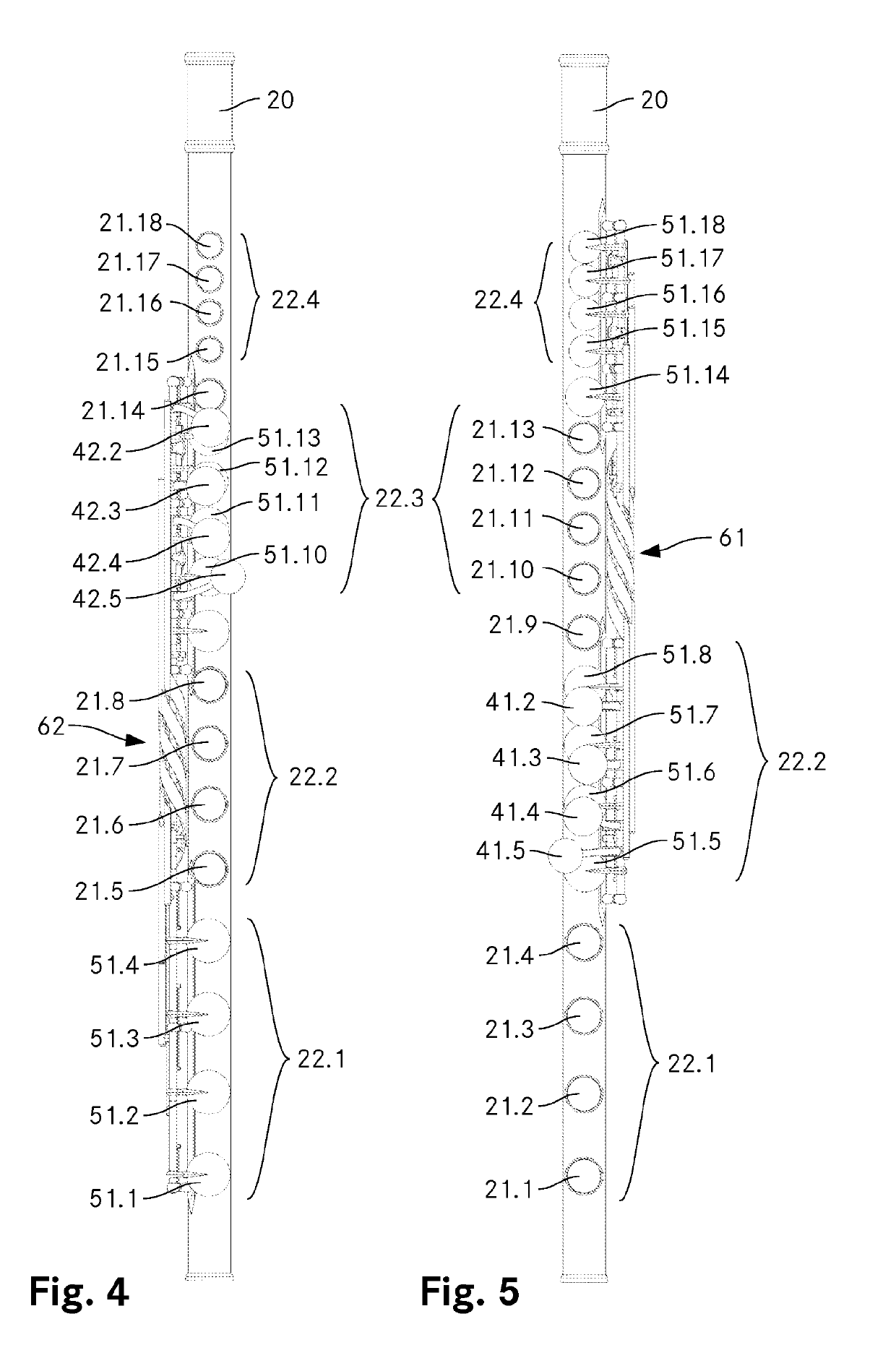Musical instrument
a technology for instruments and instruments, applied in the field of musical instruments, can solve the problems of affecting the fluid playing of instruments, affecting the playability of instruments, and not all fingers are available for the operation of tone holes, etc., and achieve the effect of reliable control of instruments
- Summary
- Abstract
- Description
- Claims
- Application Information
AI Technical Summary
Benefits of technology
Problems solved by technology
Method used
Image
Examples
Embodiment Construction
[0125]In the following, an embodiment of the invention is described. The described instrument is an acoustic concert flute.
[0126]The FIG. 1 is an angular view of the flute. The flute 1 comprises a head joint 10 which corresponds to a known usual head joint of a concert flute and a sound tube 20 to which the head joint 10 is attached to in a conventional manner.
[0127]The FIG. 2 is a top view of the sound tube of the flute, with removed mechanical parts such as keys, pads and linkages. The sound tube has 18 tone holes 21.1 . . . 18 which are arranged essentially in a line along a top side of the sound tube 20. Their size and distance is chosen in such a way that opening a further tone hole closer to the head joint end of the sound tube 20 increases pitch by a semitone, i.e. consecutively opening tone holes, starting from the free end of the sound tube 20, allows for playing a sequence of 19 semitones. Opened sequentially, the tone holes 21.1 . . . 18 will produce the notes of an ascen...
PUM
 Login to View More
Login to View More Abstract
Description
Claims
Application Information
 Login to View More
Login to View More - R&D
- Intellectual Property
- Life Sciences
- Materials
- Tech Scout
- Unparalleled Data Quality
- Higher Quality Content
- 60% Fewer Hallucinations
Browse by: Latest US Patents, China's latest patents, Technical Efficacy Thesaurus, Application Domain, Technology Topic, Popular Technical Reports.
© 2025 PatSnap. All rights reserved.Legal|Privacy policy|Modern Slavery Act Transparency Statement|Sitemap|About US| Contact US: help@patsnap.com



